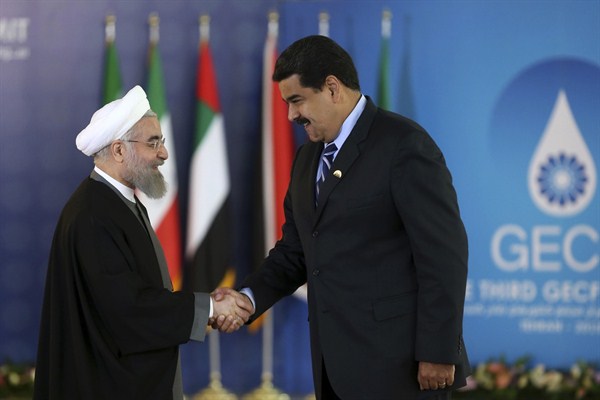This past week, Iran satisfied its obligations for implementing the nuclear deal reached last July with world powers, earning it relief from sanctions. The prisoner swap with the United States that followed hinted that a new era of possible cooperation between Washington and Tehran could be in the cards as the result of last year’s hard-earned diplomatic victory. But how relations will unfold, and how they will fare under the next U.S. administration, remain unclear.
Iran’s other relationships are also in flux. Earlier this month, Saudi Arabia severed diplomatic ties with Iran following an attack on its embassy in Tehran during protests over Riyadh’s execution of Shiite cleric Nimr al-Nimr, bringing long-simmering tensions to a head. That increasingly hostile dynamic has affected Iran’s alliances beyond the region. Directly following the Saudi move, Sudan followed suit by severing its ties with Iran, the culmination of what has been a progressive shift over the past two years. Two other Saudi allies, Bahrain and the United Arab Emirates, also cut diplomatic ties with Iran.
In many ways, Sudan’s break from Iran was a long time coming; relations had been cooling for the past two years. In 2014, Sudanese President Omar al-Bashir shut down a network of Iranian cultural centers. In another snub to Tehran, with whom it had enjoyed 25 years of good relations, Sudan joined the Saudi-led coalition in Yemen and sent warplanes to bomb Houthi forces, which Iran backs. Khartoum’s gravitation toward Riyadh shouldn’t come as a surprise: Saudi Arabia has outpaced every other county with its investments in Sudan, totaling about $11 billion.

